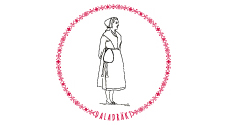
History of Folk Costumes
No one knows how the first folk costumes were created or what they looked like. In Sweden, there are multiple versions of the regional folk costumes, which each region has developed based on its own traditions, culture and availability of fabrics and materials. Typically, a family would breed and slaughter their sheep, carder the wool, and harvest the flax. The women of the family would spend their evenings, in the light of the fireplace to sew the clothing, taking care and time to embroider their parts of the costume.
In earlier times, the inhabitants of Dalecarlia wore their regional costumes daily: the garments were part of everyday life in Sweden and, when the millions of Swedes left their homeland to set foot in the United States of America, they carried their traditions and garments with them.
In the late 18th century King Gustav III, known as the Theater King, had a National court costume produced for his courthouse. For his designs, he used the patterns and colors of Dalecarlia, to pay homage to its residents, who had helped his predecessor and role model Gustav Vasa in his fight for freedom against the Danish. In the year 1721, Gustav Vasa made his way on skis between Mora and Sälen in Dalecarlia, and the ski path has since 1922 been honored yearly by 65 000 skiers in the world famous Vasaloppet.
The admiration for folklore and folktales during the National Romantic era in the late 19th century contributed to the vogue for folklore costumes. The costume appeared in the Dalecarlia-set paintings of the world famous painters Carl Larsson and Anders Zorn – as well as those of their wives Karin Larsson and Emma Zorn. Carl Larsson’s picture book ‘A home’ was a tremendous success. When leaving their homeland Swedes brought the book with them, introducing the Dalecarlians and the folk costumes to readers both in Europe and in America.
